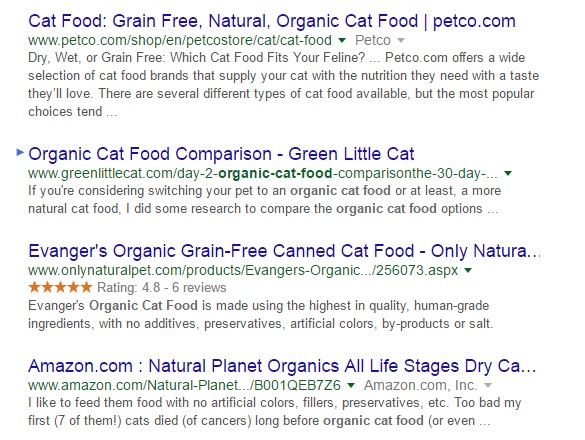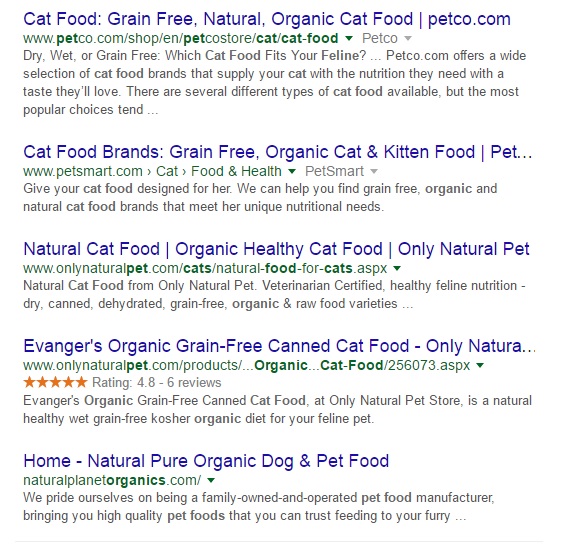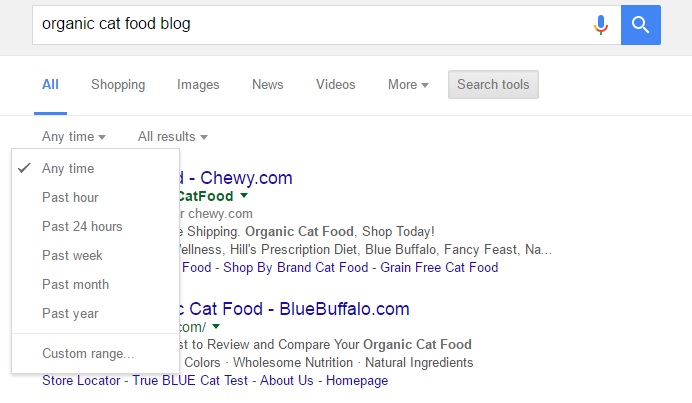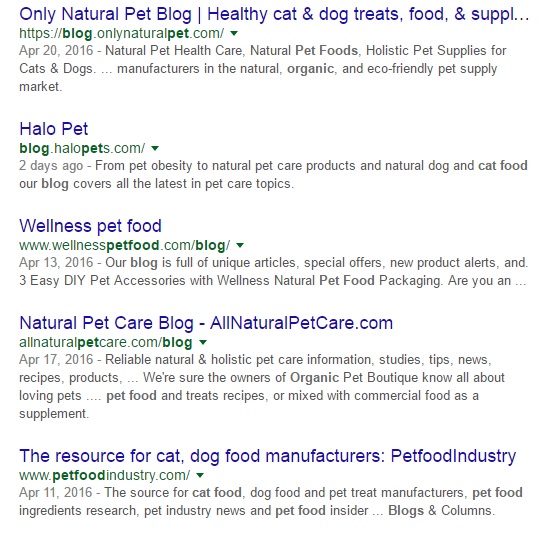Link prospecting isn’t as easy as the multitude of ultimate guides on the internet would have you believe.
Getting good at prospecting takes time, focus, and the will to refine and improve upon your process.
It’s also something you can’t skip over.
Link prospecting is essential and the true beginning of the link building process.
If you ask me, link building can be broken down into four basic parts:
1. Finding sites
2. Acquiring contact info
3. Outreach
4. Communication
Obviously, you can add many more items to that list. It can become massive.
But nearly every process in building links is done in service of finding sites, crafting successful outreach, and getting a link.
You might build resource links, you might focus on human-curated directories, or you might try your hand at a few guest posts.
I recommend a diverse link building strategy that encompasses multiple tactics, but the individual tactics don’t matter if you don’t find the right sites.
With this guide, I hope to help you refine your site finding process and help you find the most relevant, beneficial sites for your backlink portfolio.
But first, you need to understand one thing; getting good at link prospecting won’t happen overnight.
It requires real hands-on experience, trial and error, and a willingness to overcome obstacles.
You will, sometimes, reach dead ends, and sometimes, you’ll find the perfect site and never get a response, once the outreach process begins.
And that’s okay because we’ve all been there.
Link prospecting is a hands-on endeavor that requires real thought power and research.
It isn’t something you can pick up on Monday and execute at a genius-level by Friday.
It’s not either an entry-level position or something you can easily give over to a VA.
If you’re ready to get started, I’ve broken down Link Prospecting into seven sub-categories.
Link Prospecting Relevance
Every site you find for your link prospecting efforts should relate to either your industry or your physical location.
Think of it like this: Every link should serve the user who clicks on it.
If you trick a webmaster whose site talks about organic cat food into linking to your sheet metal manufacturing website, the average user won’t be pleased when they click on that link.
So, if you own a sheet metal manufacturing business, you must acquire links from sites that talk about building materials, construction, sheet metal, manufacturing labor practices, or anything relevant to what you do.
Link Prospecting Keywords and Research
Before you start the link building process, you must do some keyword research.
You should know which keywords you’re competing for, how viable they are, and approximately how many searches they get per month.
You should also target a diverse array of long tail searches with your content. That’s all part of the on-site SEO process.
Many novice link builders get discouraged when building links, even if they score a few good ones.
That’s because they haven’t optimized their own site for search engines and put in the keyword research.
It’s hard to build links to a site with thin content, or a site that’s not optimized for search engines.
If that describes you, then check out this guide to on-site SEO and this guide to keyword research, and then come back to this.
Realistically, you need to have all your own on-site basics in check before you build links.
Okay, back to keywords for this guide.
For link prospecting, you’ll keep hitting dead ends if you don’t vary the keywords you’re searching for.
There are only so many “sheet metal manufacturing write for us” pages on the internet, so you must diversify.
That’s where synonyms come in.
Thinking of synonyms and new angles to search for relevant sites will prevent you from reaching the “end of the internet.”
When you get stalled with variations on one search string, you can push forward and make more progress by switching to synonyms.
If you’ve hit a brick wall with “organic cat food,” you could try “sustainable pet food” or “gourmet pet food” or “natural food for pets.”
The variations are endless, so use your imagination and see what works. With link prospecting, the only limit to finding sites is your imagination.
Search Operators for Link Prospecting
Search operators, or search modifiers, are the key to finding relevant sites for link building.
You’ll need to find plenty of sites for every link building campaign, simply because not every site will pan out. Even if you’re a pro at outreach, your success rate won’t always be great.
Realistically, when you’re just starting, you might build six or seven links for every 50 sites you find and contact. Even the most experienced link builders in the business struggle with response rate, sometimes.

So search operators, combined with those synonyms I talked about in the last section, are the most powerful prospecting tools at your disposal when you’re finding sites.
There are tons of variations to play with, and I’ll link to a few in-depth guides below.
When you’re just starting, I recommend you use exact match searches, “inurl” searches, the query exclusion modifier, and Google’s built in “date and time” search modifier tool.
For an exact match search, put quotation marks around your query. You’re probably familiar with this, but it’s one of the most useful search operators.
Exact Match: A search for “organic cat food” (with the quotation marks) will search for that exact phrase. If you don’t search with the quotes, Google might pull up search results for cat food, organic food, and organic cat food.
Look at a search for “organic cat food”:

Inurl search: If you use the “inurl” modifier, Google will only return pages with your key phrase in their URL. This will help you find excellent, relevant resource pages and other hyper-relevant target pages for your link building efforts. You can also try using the “intitle” modifier, as well, which may bring another set of good results of pages that have your key phrase in the title.
Look at a search for inurl:organic cat food:

Query exclusion: When you’re in the middle of the link prospecting process, you’re bound to see the same sites crop up over and over. That’s not usually helpful. So, you can use an exclusion modifier, represented by a minus sign (-), to exclude certain sites from your search results.
Look at a search for organic cat food -amazon.com:

With this search, you could also use -iams.com, -purina.com, etc. if you wanted to look beyond the big brand name sites that aren’t likely to link to you.
Google’s built-in time search tool: Say, you’re looking for recently published blog posts discussing organic cat food, because you have timely research about the advantage of using non-GMO ingredients in cat food. You wouldn’t want to pull up pages from years ago. Instead, you want to narrow your search by publication date.
First, perform any search. Then click ‘search options’ and click the appropriate time constraint. You can also set a custom date range.

Here’s what I found for organic cat food blog, narrowed to pages published or updated within the last month:

Realistically, find at least 50 sites before you begin outreach. You’ll also need to keep track in a spreadsheet. If you want suggestions for tracking, I put together a post on that here.
Vetting Sites for Link Building
Once you have a good foundation of target sites, there are a few more steps, before the outreach begins.
I recommend you do the vetting process before you attempt to find contact information. That way, you can weed out low-quality sites, before you go through all the hassle of finding contact information, only to realize you wasted 15-20 minutes finding an email address for a spammy site, with robot-generated content.
When I’m looking at a target site, the first thing I look at is its spam factor.
- Is the site curated by actual humans?
- Does the content make sense?
- Do the outgoing links make sense?
- Does it have a ‘contact us’ or ‘about us’ page that shows a phone number, address, or signs of real human beings?
Basically, you don’t want a link from a site that looks anything like this:

It has no contact info, only an auto play video, some vague testimonials, and a contact form. It’s no good. There are probably thousands of duplicates of this site on the internet, all optimized, with different URLs and keywords.
Next, I check to see how often the site is updated. If you navigate to a target site’s blog, and it hasn’t been updated since 2012, you’ll want to pass. You’re not likely to get a response from a website that doesn’t update regularly.
Next, I’ll use a backlink checker to check the site’s DR and how many backlinks it has, both of which can be easily found with the Ahrefs toolbar.
You want to find sites that are curated by humans, spam free, and regularly updated.
Finding Contact Information for Link Building
Finding proper contact information is, sometimes, the most difficult part of the link prospecting process.
Many websites supply web forms on their ‘contact us’ page. That’s likely, because they have a history of being bombarded with spammy link building outreach.
So, as an industry, we’ve made it harder on ourselves by taking so many shortcuts and sending out so much spammy outreach.
You want to find an email address for a real human being. Some webmasters, bloggers, and business owners respond to web form requests. Most, however, do not.
You have a much better chance with an actual email address.
When I can’t find an email address on a contact page, an about us page, in the site’s footer, or in various author bios, here’s what I do:
- I do a Google search, using the ‘*’ wildcard for @domain.com. So, if I want to find an email for Iams.com, I might search for: email *@iams.com
- If that fails, I’ll try a similar search, like “email us” site:iams.com
- I might check the site’s social media accounts to see if they have contact information listed.
- If all else fails, I might try emailing info@iams.com or admin@iams.com, but those aren’t surefire methods.
You won’t always succeed with those methods. You can always run a WHOIS report on a domain, but that won’t always yield good results, either.
If all of those methods fail, try this nifty chrome extension.
Realistically, you won’t find good contact info for some sites, and you must put your results at the mercy of a web form.
There’s no magical solution here, but a little extra research and groundwork separate effective link builders from the amateurs.
Link Prospecting Tools
In my own link prospecting efforts, I find manual Google searches are the most valuable use of my time.
There are, however, a few good link prospecting tools out there. They’re almost all paid options, and they’ll generate huge lists of websites. You’ll have to go through those websites, manually, at some point anyway.
So, it’s up to you, whether you want to find target sites yourself or use an automated tool.
Final Thoughts
Real link prospecting takes practice.
You’re going to get frustrated. You’re going to think you’ve reached the end of the internet. You’re not always going to get optimal results.
But if you keep pushing, keep innovating with your search strings and keyword synonyms, and keep thinking outside the box, you’ll get comfortable.
Link prospecting is often a tedious task, and there’s never instant gratification.
Finding quality target sites is the foundation for every link building campaign, so you can’t ignore it.
You’ll get frustrated, but, to build links, you can’t give up. Put in the time.
All you can do is get good at it and get results.

Comments
Great tips and thanks for sharing David.
You are welcome, Susan!
Your post was awesome and I felt much more better when I read your final thoughts about getting frustrated.
Anyway, I’ve implemented many strategy such as 404 broken link building, skyscraper, resources, curated , egobait etc… And thank to God that I made new angle to get good relationship to build high quality backlinks that gives more that 20% response rate. Just two simple steps. I’m planning to post soon with this way that I hope every Link builder would appreciate that. Thank you David for sharing your great ideas!
This is really awesome post, thanks